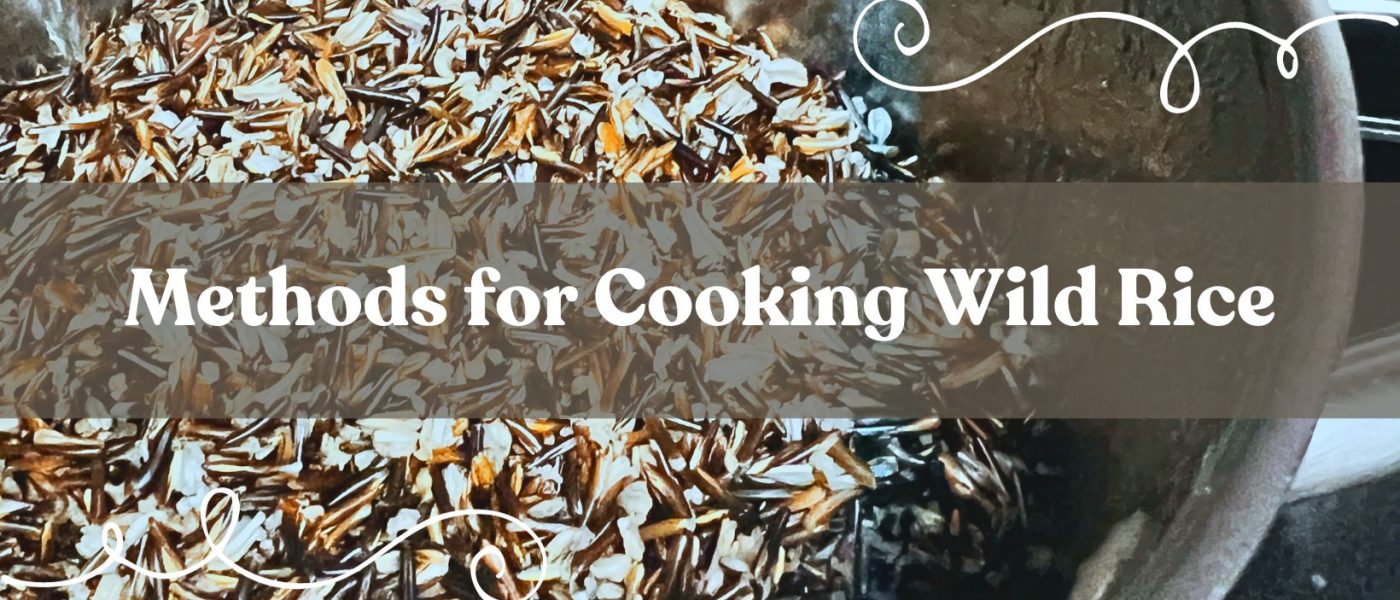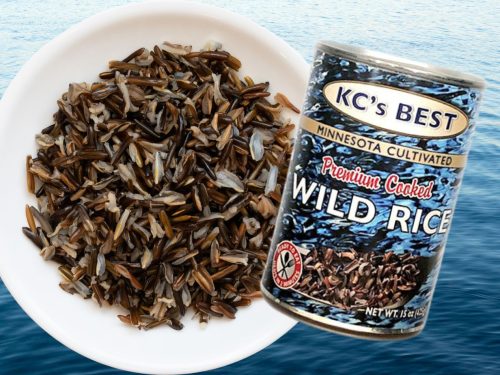
Wild rice, with its nutty flavor and chewy texture, is a versatile grain that adds a unique touch to a variety of dishes. Whether you are a seasoned chef or a home cook looking to experiment in the kitchen, mastering the art of cooking wild rice is essential. In this blog post, we will explore different ways to cook wild rice, including boiling, using an Instant Pot, using a rice cooker and the pasta method. Let’s dive in!
Boiling Method: The boiling method is a traditional and straightforward (and our preferred) way to cook wild rice. Here’s how to do it: Ingredients:
- 1 cup wild rice
- 4 cups water or broth
- Salt to taste
Instructions:
- Rinse the wild rice under cold water to remove any impurities.
- In a medium-sized saucepan, combine wild rice, water or broth, and salt.
- Bring the mixture to a boil over medium-high heat.
- Reduce the heat to low, cover, and simmer for 45-60 minutes, or until the grains are tender and have burst open.
- Drain any excess liquid and fluff the rice with a fork before serving.
Instant Pot Method: The instant pot (pressure cooker) method is a convenient and time-saving way to cook wild rice. Here’s how to do it:
Ingredients
- 1 cup wild rice
- 3 cups water or broth
- 1/2 teaspoon salt
Instructions:
- Rinse the wild rice under cold water to remove any impurities.
- Add wild rice, water or broth, and salt to the Instant Pot.
- Secure the lid, set the valve to the sealing position, and select the “Pressure Cook” or “Manual” setting.
- Cook on high pressure for 28 minutes.
- Once the cooking time is up, let the pressure release naturally for 10 minutes, then quick-release any remaining pressure.
- Fluff the rice with a fork before serving.
Rice Cooker Method: Cooking wild rice in a rice cooker is simple and requires minimal effort. Here’s a step-by-step guide:
Ingredients:
- 1 cup wild rice
- 3 cups water or broth (vegetable, chicken, or beef)
- 1/2 teaspoon salt (optional)
Instructions:
- Rinse the wild rice under cold water using a fine-mesh strainer. This helps to remove any impurities and excess starch from the grains.
- Add the rinsed wild rice, water or broth, and salt (if using) to the rice cooker.
- Close the lid of the rice cooker and select the appropriate cooking setting. If your rice cooker has a specific setting for brown rice or whole grains, use that setting. If not, use the standard white rice setting.
- Allow the rice cooker to cook the wild rice until it automatically switches to the “Keep Warm” or “Warm” setting. This usually takes around 45-60 minutes, depending on your rice cooker.
- Let the wild rice sit in the rice cooker with the lid closed for an additional 10-15 minutes to steam and fluff up.
- Open the lid and fluff the wild rice with a fork before serving.
Keep in mind that cooking times can vary depending on the specific brand and model of your rice cooker, as well as the type of wild rice you are using. Adjust the cooking time and water/broth ratio as needed to achieve your desired texture.
“Pasta Method:” The pasta method is an unconventional yet effective way to cook wild rice, but here is how you can do it:
Ingredients:
- 1 cup wild rice
- 4 cups water
- Salt to taste
Instructions:
- Rinse the wild rice under cold water to remove any impurities.
- Bring a large pot of salted water to a boil, just like you would for pasta.
- Add the wild rice to the boiling water and cook for 45-60 minutes, or until the grains are tender and have burst open.
- Drain the wild rice in a fine-mesh strainer, and fluff with a fork before serving.
Cooking wild rice can be a fun and rewarding experience, and with the right method, you can achieve perfect results every time. Whether you prefer the traditional boiling method, the convenience of an Instant Pot or rice cooker, or the pasta method, each approach offers its unique benefits. Try experimenting with different methods and find the one that works best for you. Happy cooking!










